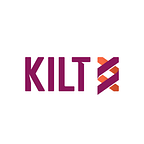KILT Protocol in the Real World — Machine Identity
KILT is a blockchain protocol for issuing decentralised identifiers and verifiable credentials. KILT brings the old process of trust in real-world credentials (passport, driving licence, certificates, etc.) to the digital world, representing your identity while keeping your data private and in your possession.
But KILT Protocol is not just for people. It can be used for machines, services and anything that identities can be built on, too.
Machine Identity
Identity is multifaceted, made up of a unique combination of characteristics, attributes and properties that distinguish a person or object from others.
At KILT we break identity down into two key components:
- A decentralised identifier (DID), which uniquely identifies an entity or device, and
- Verifiable, revocable credentials that are confirmed by trusted parties (“attesters”).
In machine identity, these credentials would be the static and dynamic properties of the device, such as certificates, rights, roles or capabilities.
In order to add credentials to its identifier (DID), the device could create a claim that it wants to have confirmed by an attester. The attester would check that the attributes are correct and if they are, would send a credential back to the device, which would store it under its control. Additionally, the attester anchors the validity of the credential by creating a hash out of the credential that represents the credential on the blockchain.
If the attributes change or become invalid, the attester could invalidate the credential on the blockchain. When the device presents a credential to a third party (verifier), the third party could check if the entity presenting the credential actually owns it, and could verify the validity of the credential on the blockchain.
Using the KILT Protocol, only a hash that represents the credential and its validity is ever recorded on the blockchain, not the full certificate itself. Thus, a minimum of data is stored to maximise privacy, anonymity and security. The attested certificate itself remains the property of the device and can only be read with the permission of the device owner.
Energy Efficiency
How could that be used in the real world? A current example is our collaboration with dena, Germany’s federal energy agency.
In a move towards greater energy efficiency, dena initiated a project to create the Blockchain Machine Identity Ledger (BMIL), a decentralised digital registry to enable the integration of energy generating and energy consuming devices as active market participants.
To achieve this, assets such as energy meters, heat pumps, solar power systems, etc. could register their identity on the BMIL. As outlined above, this means that the device could generate an identifier in the form of a DID, with attributes assigned to this identifier as verifiable credentials whose validity is anchored on the BMIL as long as they meet the standards built into the system. More credentials could be added as needed, creating a digital identity.
These digital identities would allow data to be exchanged between the market participants and systems while meeting the required regulatory standards.The process contributes to the creation of the digital ledger as a dynamic registry of devices to be registered and have their data verified in a decentralised way. The owner of the unique identifier of each device could choose how much information is released by it, maintaining privacy and control over the data.
This pilot project provides the basis for building services and market-oriented applications, complementing the use of smart meters. The BMIL thus aims to coordinate and connect the rapidly increasing interfaces within the German energy system. In addition to being secure, reliable and traceable, the cost of sharing data could be kept low.
Cooperation
The dena project is being delivered by an alliance of 21 partners, made up of scientists, established players in the digital and energy sectors, and innovative blockchain startups like BOTLabs, the inventor of KILT.
KILT is participating as part of a consortium led by Energy Web Foundation, a global non-profit organisation who use open-source technology to initiate a low carbon system that enables any energy asset owned by any customer to participate in any energy market. The Energy Web blockchain was launched in 2019.
Other members of the consortium include Riddle & Code, 50 Hertz, and Parity Technologies, the company behind the development of Substrate — the blockchain technology that KILT is built on — and Polkadot, a ground-breaking “blockchain of blockchains”.
Web 3.0 with KILT
This is just one example of the many ways KILT Protocol could be used to create digital identifiers and revocable, verifiable credentials while protecting the self sovereignty and anonymity of the data owner. We look forward to seeing how entrepreneurial developers use our universal protocol as blockchain technology moves into the next generation of the internet, Web 3.0, evolving beyond the hype to real-world uses.
We are proud to be part of the cutting edge of that revolution. In 2018 we were early adopters of Substrate, the modular system powered by Parity Technologies that makes it easy to build a customized blockchain using pre-built components. Substrate also allows seamless integration with Polkadot — an ecosystem of blockchains that overcomes the previous problems of security, scalability, and interoperability that have hampered blockchain adoption so far. Founded by Ethereum co-founder and former CTO Gavin Wood, Polkadot is paving the way for a new era of innovation.
In January 2021 KILT became one of the first projects in the world to join Rococo, the parachain testnet for the Polkadot ecosystem. When parachains have been fully tested and stabilised on Rococo and subsequently on Kusama, Polkadot’s canary network, we aim to participate in the first Kusama parachain auctions. We then intend to start our mainnet on Kusama shortly after securing a parachain slot to make our services available as soon as possible.
See our Path to Parachains article for more details and sign up for our newsletter to stay up-to-date with developments as they occur.
